Strain Gauge Location Optimization for Operational Load Monitoring of an Aircraft Wing Using an Improved Correlation Measure
Abstract
:1. Introduction
2. Strain Gauge Location Optimization Based on a Minimum Correlation Criterion
2.1. Traditional Pearson Correlation Method
2.2. The Proposed Improved Correlation Method Based on a Minimum Correlation Criterion
- Step 1: Select the original monitoring points
- Step 2: Build the training dataset and test dataset
- Step 3: Initial selection of original monitoring points for the first stage
- Step 4: Determine the optimal monitoring locations in the second stage
3. Strain Gauge Location Optimization of an Aircraft Wing
3.1. Finite Element Model of an Aircraft Wing
3.2. Initial Strain Monitoring Points and Strain–Load Data
3.3. Preliminary Selection of Strain Monitoring Points
3.4. Strain Gauge Location Optimization Based on the Improved Correlation Measure
4. Comparison Studies with LASSO and PCR Methods
4.1. LASSO Regression Method
4.2. Principal Component Regression Method
5. Conclusions
- The strain gauge location optimization method based on the proposed improved correlation method gives different combination sequences of monitoring points and the optimal strain monitoring location sequence can be readily determined.
- The proposed correlation method is reliable and robust in optimizing the strain gauge locations and providing accurate load prediction results.
- LASSO regression can select strain monitoring points by constructing a penalty function, but its performance depends on the monitored loads and can only deal with a single load variable condition each time.
- Principal component regression can yield two principal components to make its contribution rate reach 95%, with their load prediction errors being less than 5%, but it belongs to the feature extraction method, requiring the information of all monitoring points.
- For practical application of the proposed method, the optimal strain gauge locations are determined via finite element analysis of aircraft structures. Furthermore, the optimized strain gauge locations should be validated by a ground test before implementation in practical applications. In addition, backup strain gauge locations should be considered for practical application.
Author Contributions
Funding
Institutional Review Board Statement
Informed Consent Statement
Data Availability Statement
Conflicts of Interest
References
- Rui, J.; He, X.; Li, Y. Individual aircraft life monitoring: An engineering approach for fatigue damage evaluation. Chin. J. Aeronaut. 2018, 31, 727–739. [Google Scholar]
- Ignatovich, S.; Menou, A.; Karuskevich, M.; Maruschak, P. Fatigue damage and sensor development for aircraft structural health monitoring. Theor. Appl. Fract. Mech. 2013, 65, 23–27. [Google Scholar] [CrossRef]
- Zhang, Y.; Wang, B.; Ning, Y.; Xue, H.; Lei, X. Study on health monitoring and fatigue life prediction of aircraft structures. Materials 2022, 15, 8606. [Google Scholar] [CrossRef] [PubMed]
- Dziendzikowski, M.; Kurnyta, A.; Reymer, P.; Kurdelski, M.; Klysz, S.; Leski, A.; Dragan, K. Application of operational load monitoring system for fatigue estimation of main landing gear attachment frame of an aircraft. Materials 2021, 14, 6564. [Google Scholar] [CrossRef]
- Molent, L.; Aktepe, B. Review of fatigue monitoring of agile military aircraft. Fatigue Fract. Eng. Mater. Struct. 2000, 23, 767–785. [Google Scholar] [CrossRef]
- Zhang, Y.; Cao, S.; Wang, B.; Yin, Z. A Flight Parameter-Based Aircraft Structural Load Monitoring Method Using a Genetic Algorithm Enhanced Extreme Learning Machine. Appl. Sci. 2023, 13, 4018. [Google Scholar] [CrossRef]
- Zhang, C.; Mousavi, A.A.; Masri, S.F.; Gholipour, G.; Yan, K.; Li, X. Vibration feature extraction using signal processing techniques for structural health monitoring: A review. Mech. Syst. Signal Process. 2022, 177, 109175. [Google Scholar] [CrossRef]
- Sofi, A.; Regita, J.J.; Rane, B.; Lau, H.H. Structural health monitoring using wireless smart sensor network—An overview. Mech. Syst. Signal Process. 2022, 163, 108113. [Google Scholar] [CrossRef]
- Hassani, S.; Dackermann, U. A systematic review of advanced sensor technologies for non-destructive testing and structural health monitoring. Sensors 2023, 23, 2204. [Google Scholar] [CrossRef]
- Ostachowicz, W.; Soman, R.; Malinowski, P. Optimization of sensor placement for structural health monitoring: A review. Struct. Health Monit. 2019, 18, 963–988. [Google Scholar] [CrossRef]
- Tan, Y.; Zhang, L. Computational methodologies for optimal sensor placement in structural health monitoring: A review. Struct. Health Monit. 2020, 19, 1287–1308. [Google Scholar] [CrossRef]
- Wang, S.; Lai, X.; He, X.; Li, K.; Lv, L.; Song, X. Optimal sensor placement for digital twin based on mutual information and correlation with multi-fidelity data. Eng. Comput. 2024, 40, 1289–1308. [Google Scholar] [CrossRef]
- Kružić, S.; Musić, J.; Papić, V.; Kamnik, R. Strain Gauge Neural Network-Based Estimation as an Alternative for Force and Torque Sensor Measurements in Robot Manipulators. Appl. Sci. 2023, 13, 10217. [Google Scholar] [CrossRef]
- Barthorpe, R.J.; Worden, K. Emerging trends in optimal structural health monitoring system design: From sensor placement to system evaluation. J. Sens. Actuator Netw. 2020, 9, 31. [Google Scholar] [CrossRef]
- Yi, T.H.; Li, H.N.; Gu, M. Optimal sensor placement for structural health monitoring based on multiple optimization strategies. Struct. Des. Tall Spec. Build. 2011, 20, 881–900. [Google Scholar] [CrossRef]
- Flah, M.; Nunez, I.; Ben Chaabene, W.; Nehdi, M.L. Machine learning algorithms in civil structural health monitoring: A systematic review. Arch. Comput. Methods Eng. 2021, 28, 2621–2643. [Google Scholar] [CrossRef]
- Sony, S.; Laventure, S.; Sadhu, A. A literature review of next-generation smart sensing technology in structural health monitoring. Struct. Control Health Monit. 2019, 26, e2321. [Google Scholar] [CrossRef]
- Jaya, M.M.; Ceravolo, R.; Fragonara, L.Z.; Matta, E. An optimal sensor placement strategy for reliable expansion of mode shapes under measurement noise and modelling error. J. Sound Vib. 2020, 487, 115511. [Google Scholar] [CrossRef]
- Zhou, K.; Wu, Z.Y. Strain gauge placement optimization for structural performance assessment. Eng. Struct. 2017, 141, 184–197. [Google Scholar] [CrossRef]
- Jiang, X.; Jiang, F. Optimal strain sensors placement to analyze the modal parameters of the sorting arm. J. Vibroeng. 2020, 22, 145–155. [Google Scholar] [CrossRef]
- Morris, B.K.; Davis, R.B. Optimal design of strain sensor placement for distributed static load determination. Inverse Probl. 2023, 39, 125017. [Google Scholar] [CrossRef]
- Zhou, J.; Cai, Z.; Zhao, P.; Tang, B. Efficient sensor placement optimization for shape deformation sensing of antenna structures with fiber Bragg grating strain sensors. Sensors 2018, 18, 2481. [Google Scholar] [CrossRef]
- König, C.; Helmi, A.M. Sensitivity analysis of sensors in a hydraulic condition monitoring system using CNN models. Sensors 2020, 20, 3307. [Google Scholar] [CrossRef] [PubMed]
- Růžička, J. Strain gauge placement optimization methodology to measure multiaxial loads of complex structure. J. Strain Anal. Eng. Des. 2022, 57, 614–628. [Google Scholar] [CrossRef]
- Święch, Ł. Calibration of a load measurement system for an unmanned aircraft composite wing based on fibre bragg gratings and electrical strain gauges. Aerospace 2020, 7, 27. [Google Scholar] [CrossRef]
- Hassani, S.; Dackermann, U. A systematic review of optimization algorithms for structural health monitoring and optimal sensor placement. Sensors 2023, 23, 3293. [Google Scholar] [CrossRef] [PubMed]
- Huang, Y.; Ludwig, S.A.; Deng, F. Sensor optimization using a genetic algorithm for structural health monitoring in harsh environments. J. Civ. Struct. Health Monit. 2016, 6, 509–519. [Google Scholar] [CrossRef]
- Yang, C. Sensor placement for structural health monitoring using hybrid optimization algorithm based on sensor distribution index and FE grids. Struct. Control Health Monit. 2018, 25, e2160. [Google Scholar] [CrossRef]
- Rodríguez, R.; Mexicano, A.; Bila, J.; Cervantes, S.; Ponce, R. Feature extraction of electrocardiogram signals by applying adaptive threshold and principal component analysis. J. Appl. Res. Technol. 2015, 13, 261–269. [Google Scholar] [CrossRef]
- Yan, X.; Nazmi, S.; Erol, B.A.; Homaifar, A.; Gebru, B.; Tunstel, E. An efficient unsupervised feature selection procedure through feature clustering. Pattern Recognit. Lett. 2020, 131, 277–284. [Google Scholar] [CrossRef]
- Tian, Y.; Zhang, J.; Li, L.; Liu, Z. A novel sensor-based human activity recognition method based on hybrid feature selection and combinational optimization. IEEE Access 2021, 9, 107235–107249. [Google Scholar] [CrossRef]
- Lu, W.; Wen, R.; Teng, J.; Li, X.; Li, C. Data correlation analysis for optimal sensor placement using a bond energy algorithm. Measurement 2016, 91, 509–518. [Google Scholar] [CrossRef]
- Shin, G.-H.; Hur, J.-W. Correlation coefficient based optimal vibration sensor placement and number. Sensors 2022, 22, 1207. [Google Scholar] [CrossRef] [PubMed]
- Zhang, M.; Ding, J.; Li, B. Sparse learning method with feature selection for sensor placement and response prediction. IEEE Trans. Aerosp. Electron. Syst. 2024, Early access. [Google Scholar] [CrossRef]
- Al-Obeidat, F.; Spencer, B.; Alfandi, O. Consistently accurate forecasts of temperature within buildings from sensor data using ridge and lasso regression. Future Gener. Comput. Syst. 2020, 110, 382–392. [Google Scholar] [CrossRef]
- Yu, H.; Hutson, A.D. Inferential procedures based on the weighted Pearson correlation coefficient test statistic. J. Appl. Stat. 2024, 51, 481–496. [Google Scholar] [CrossRef]
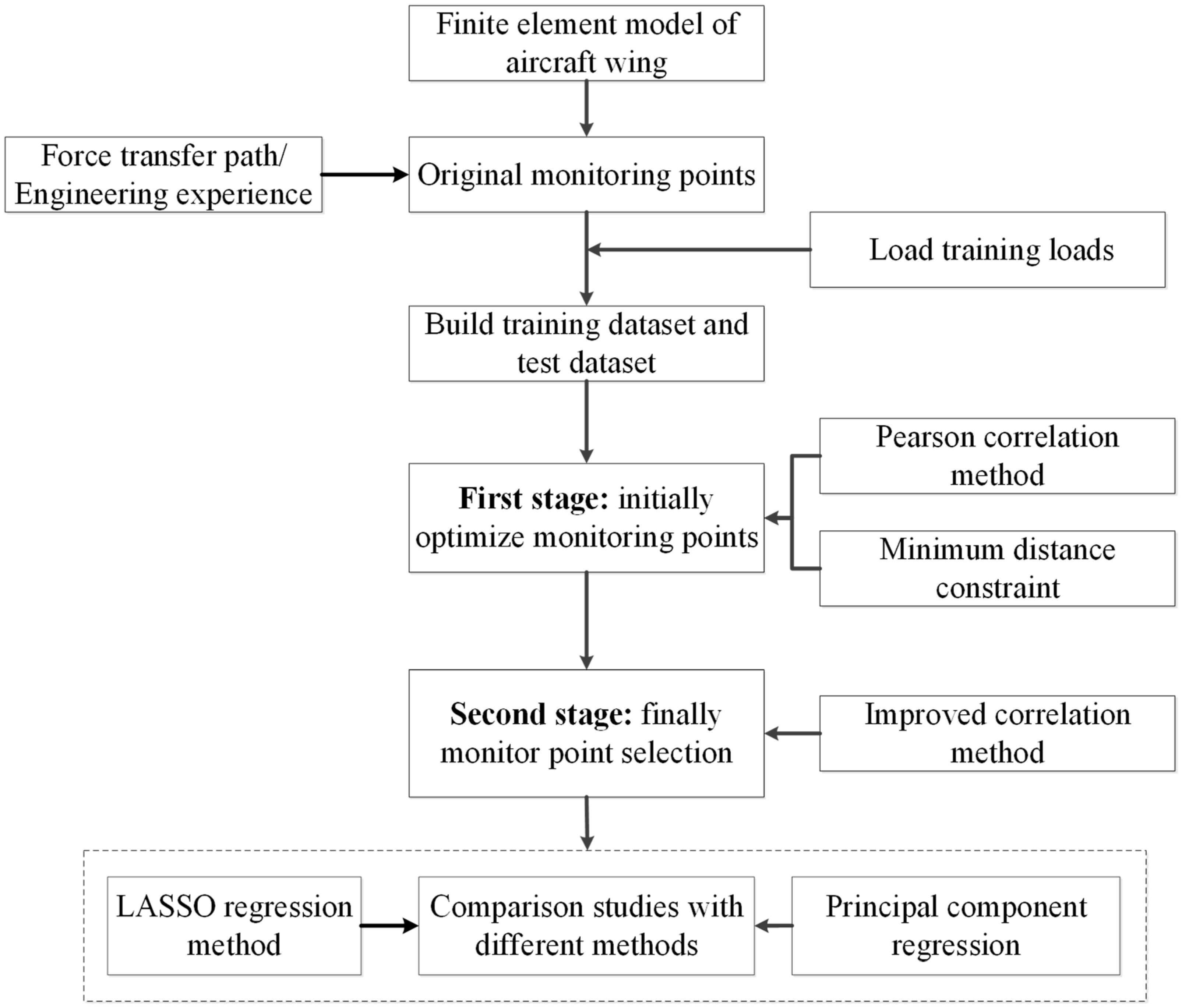

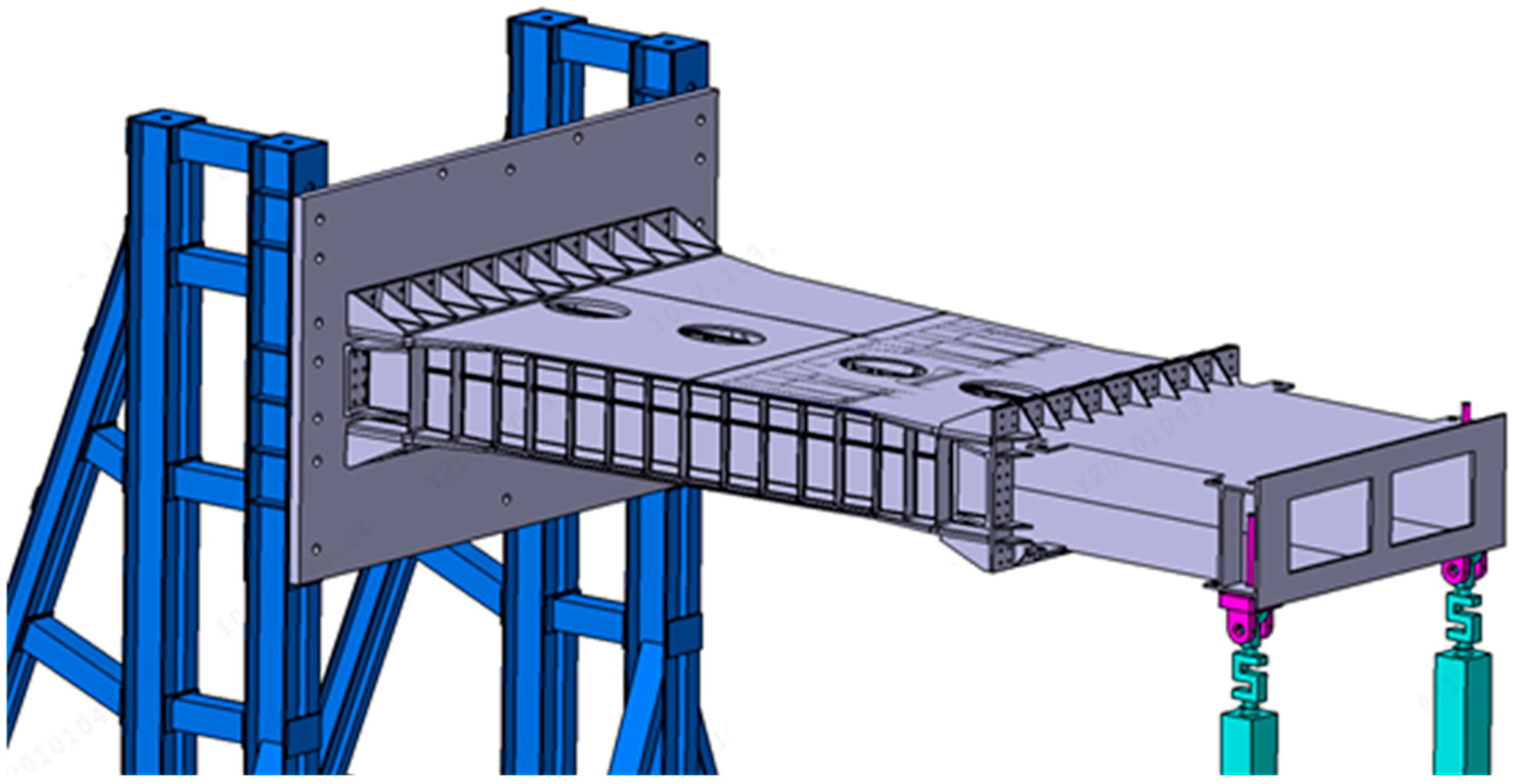
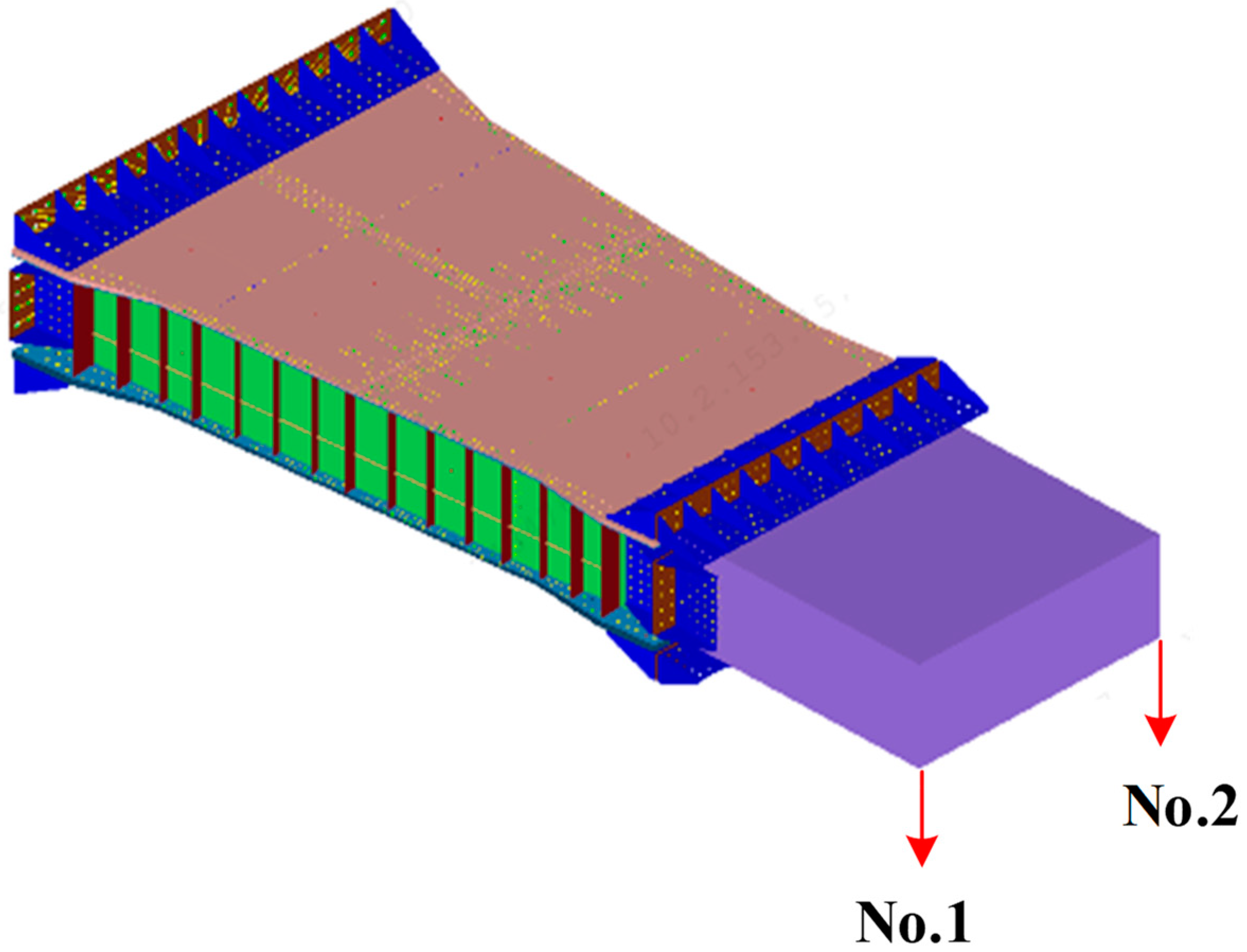
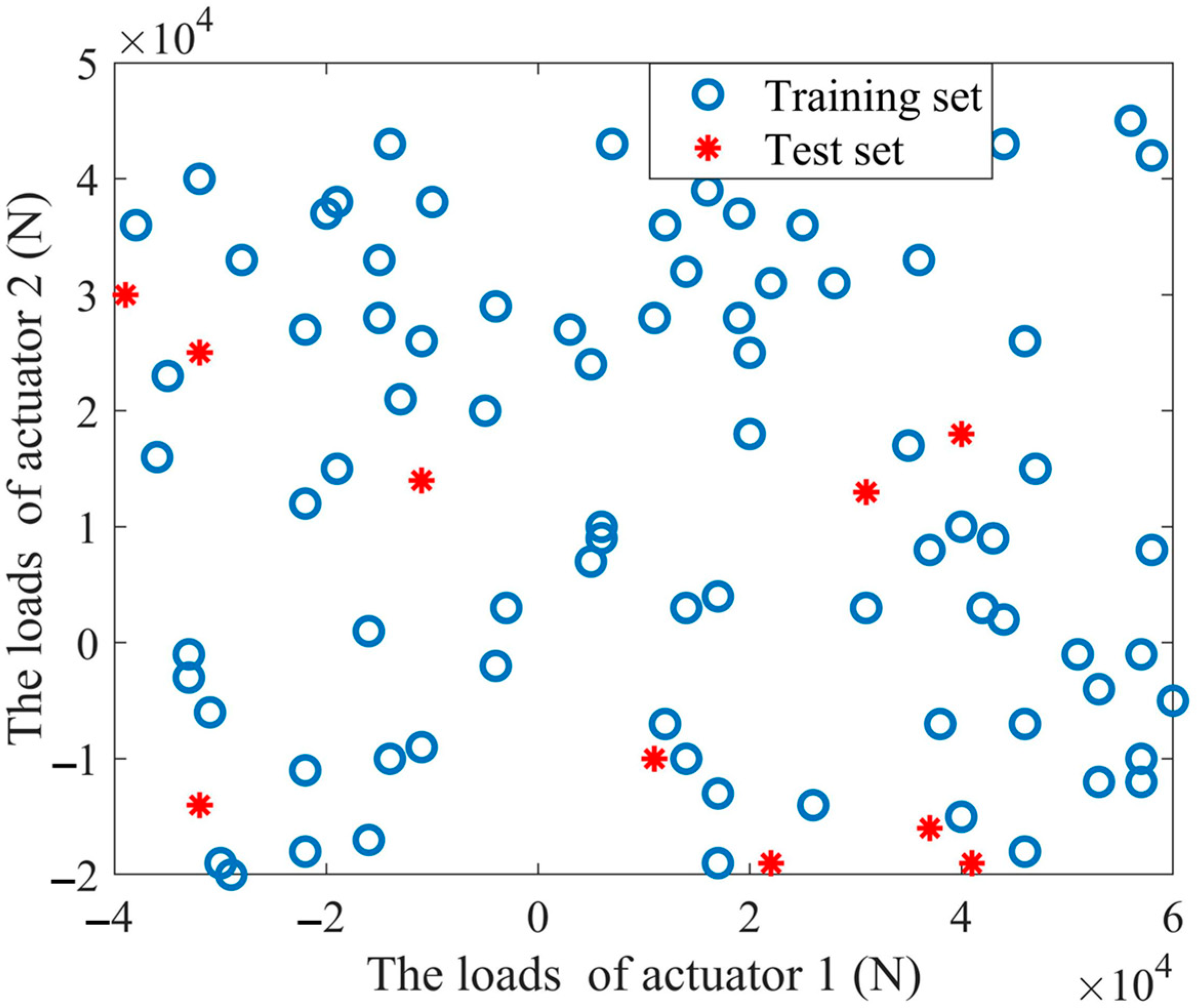
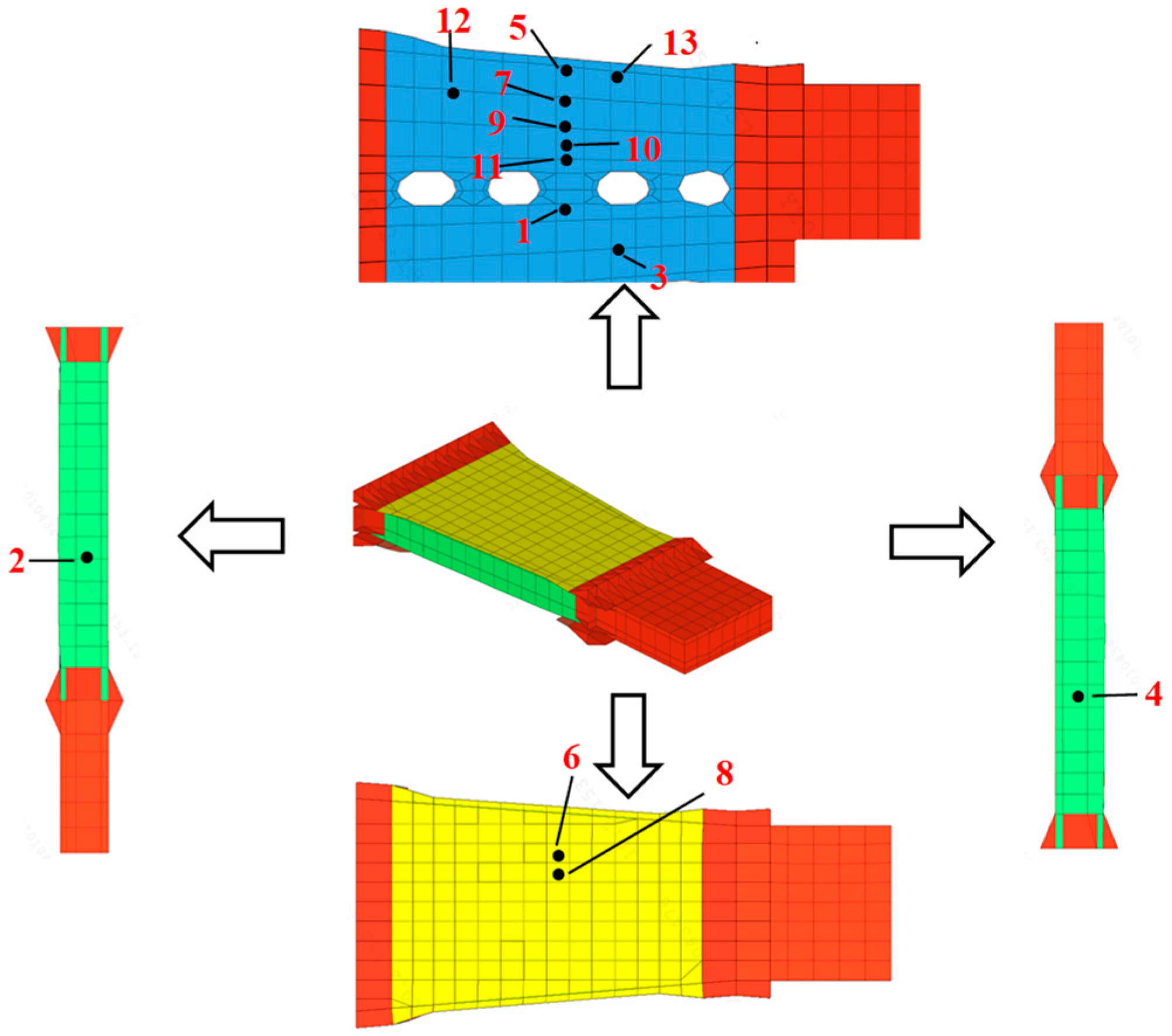


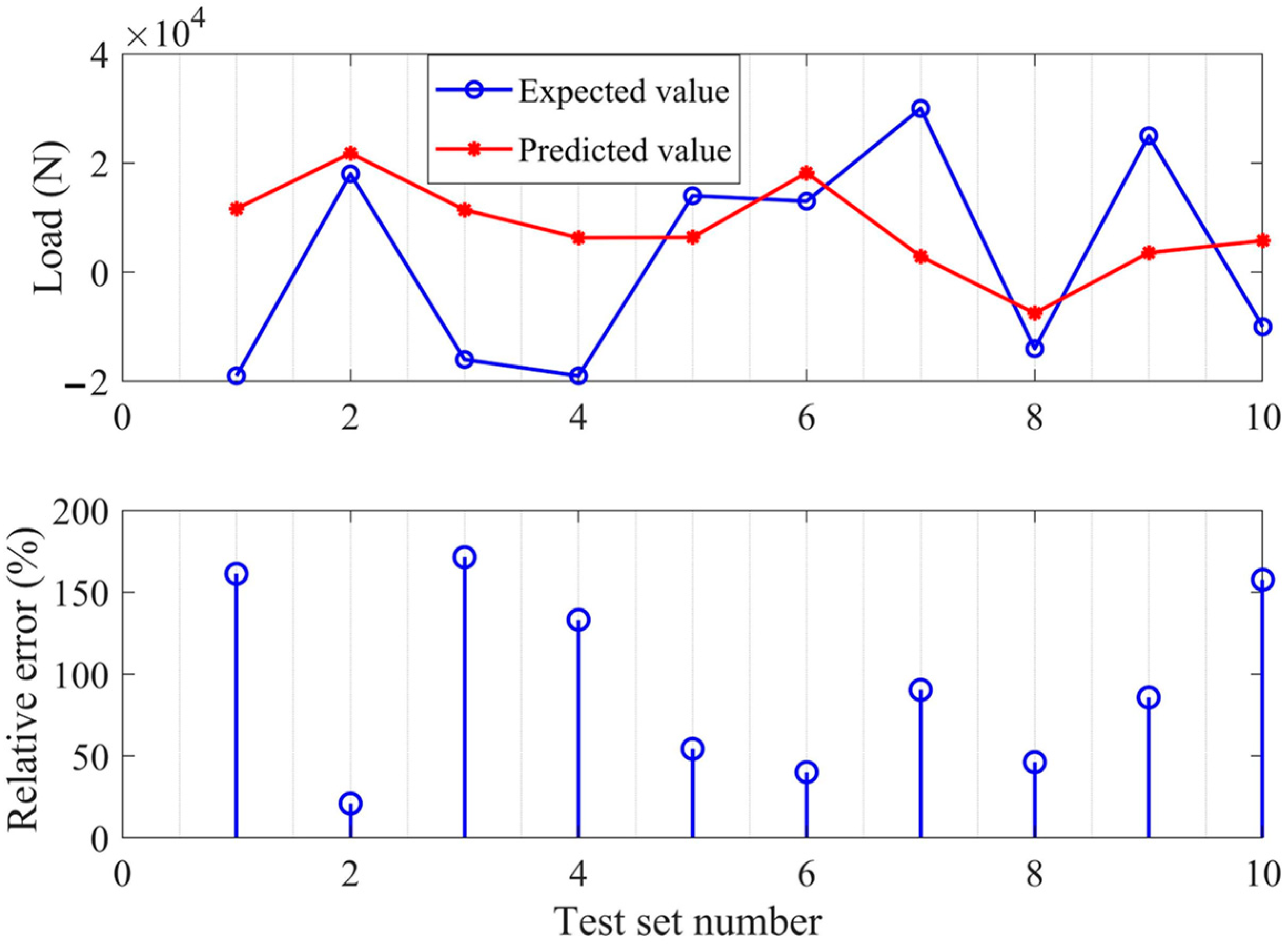
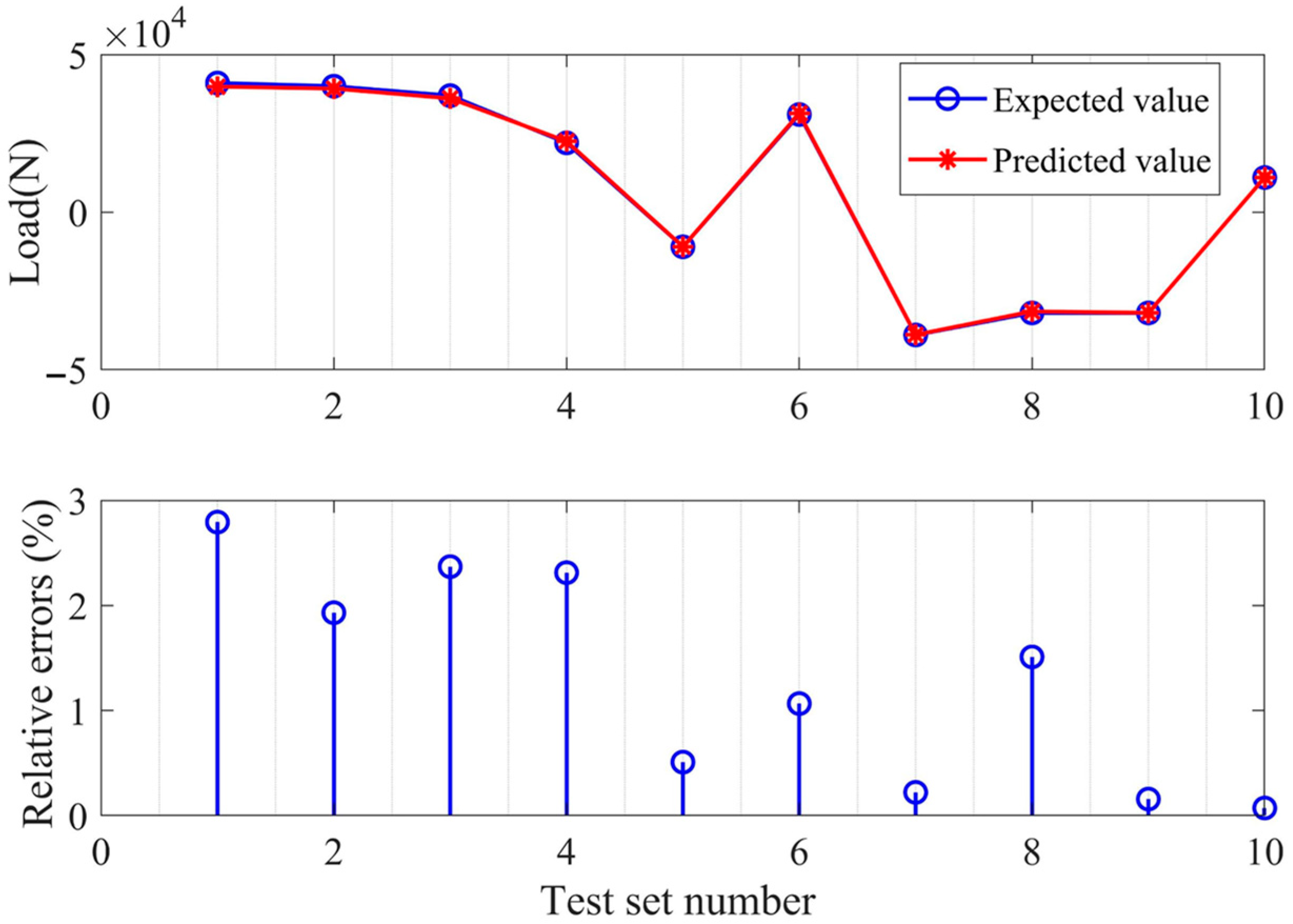

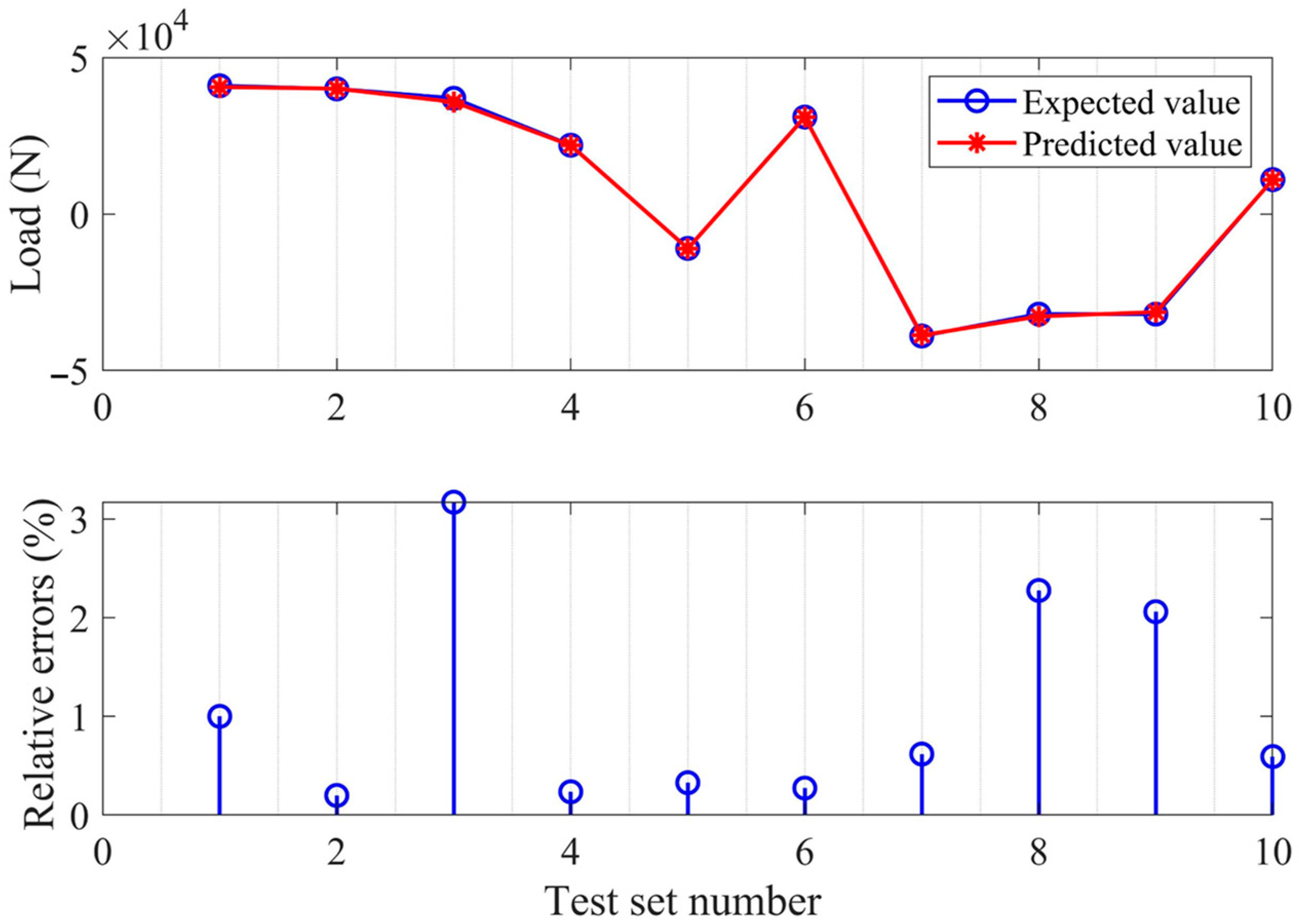
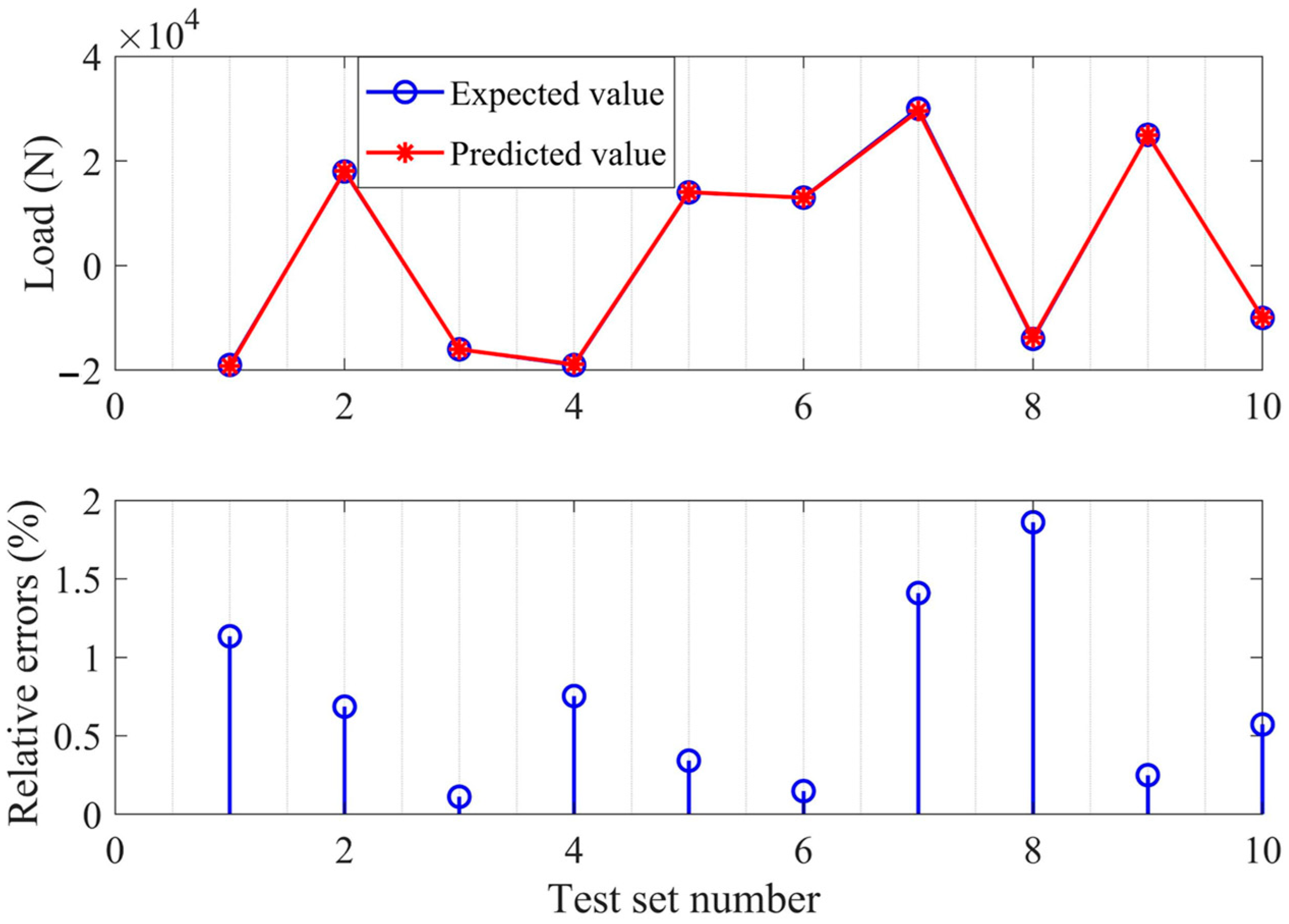
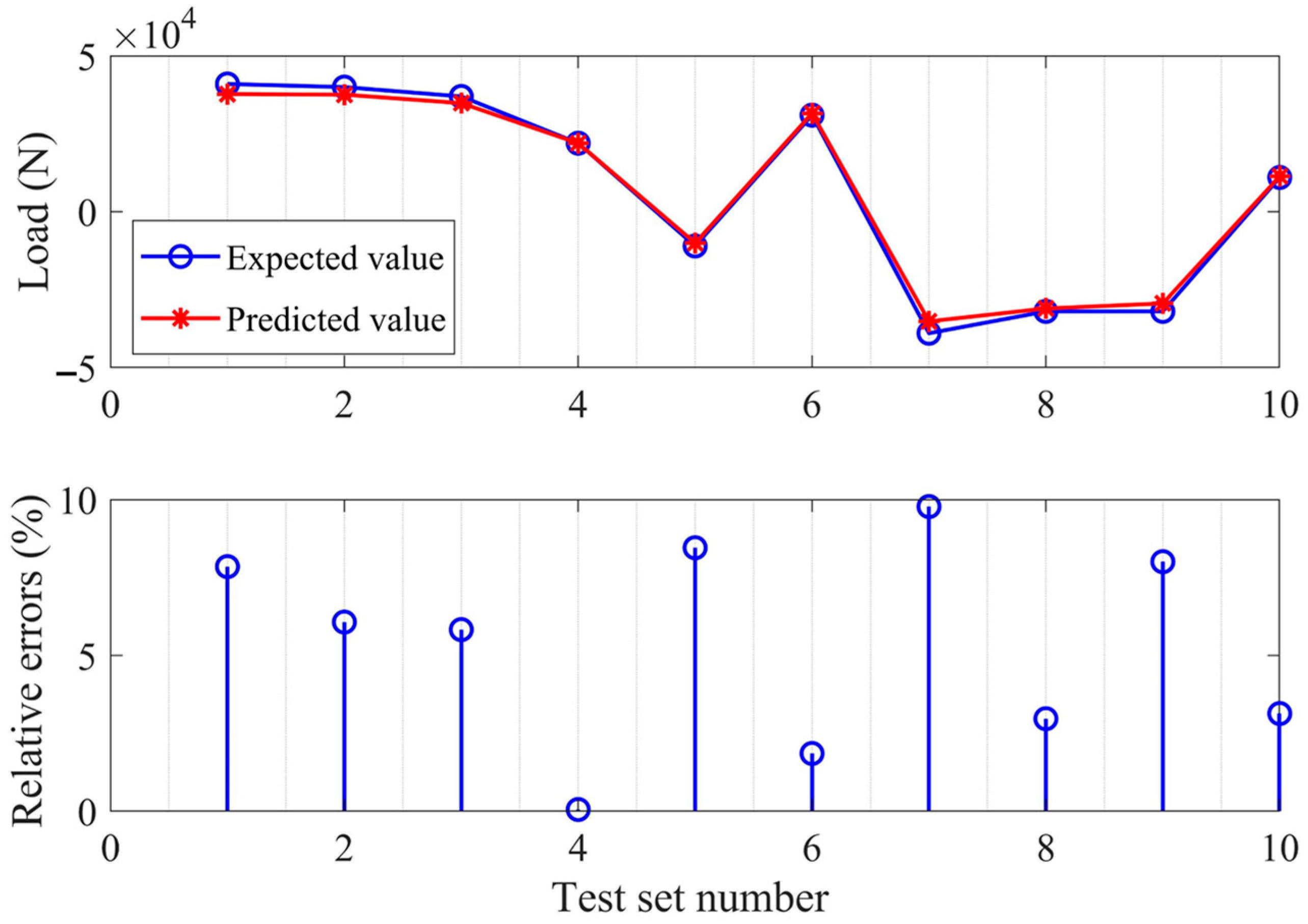
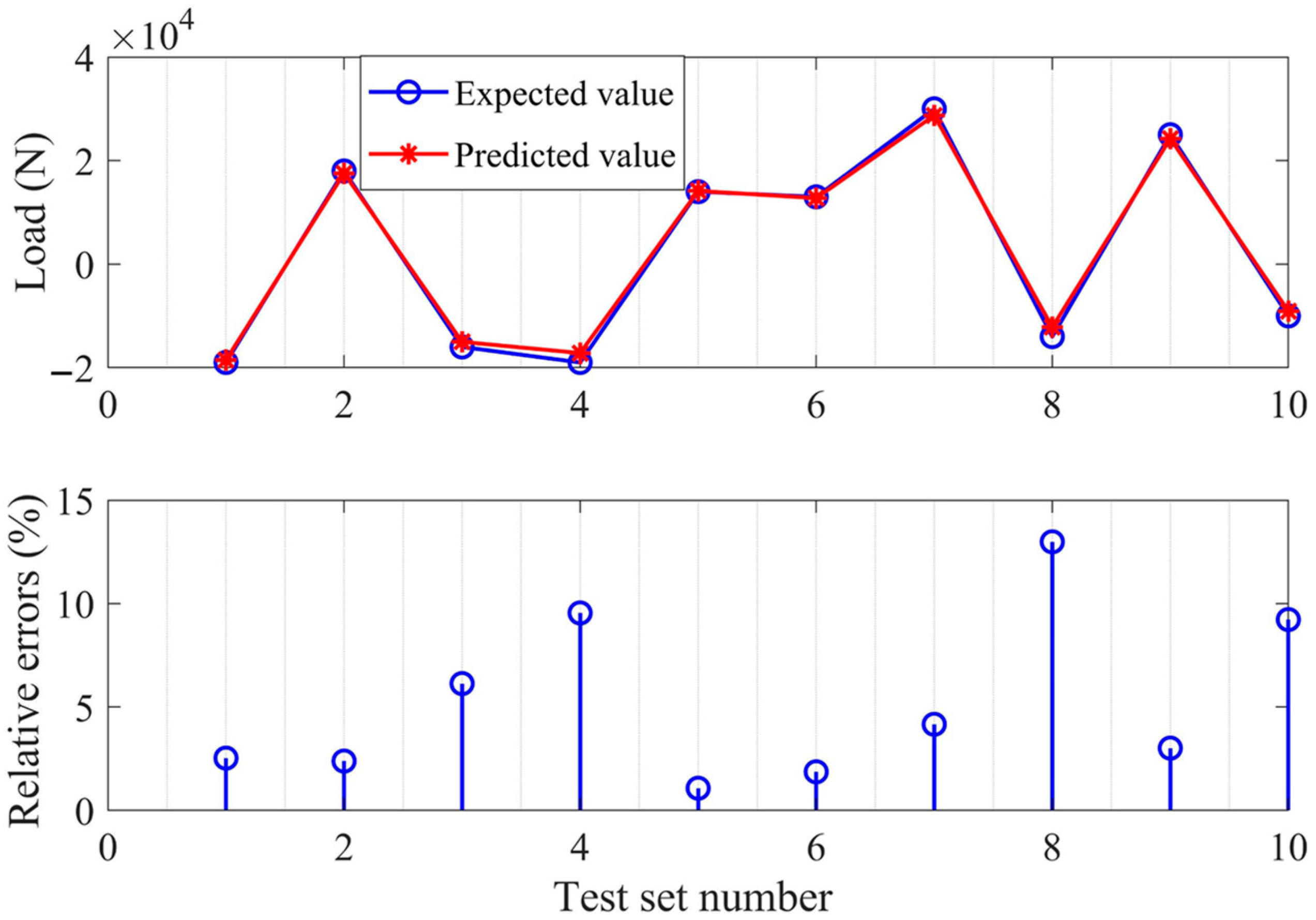
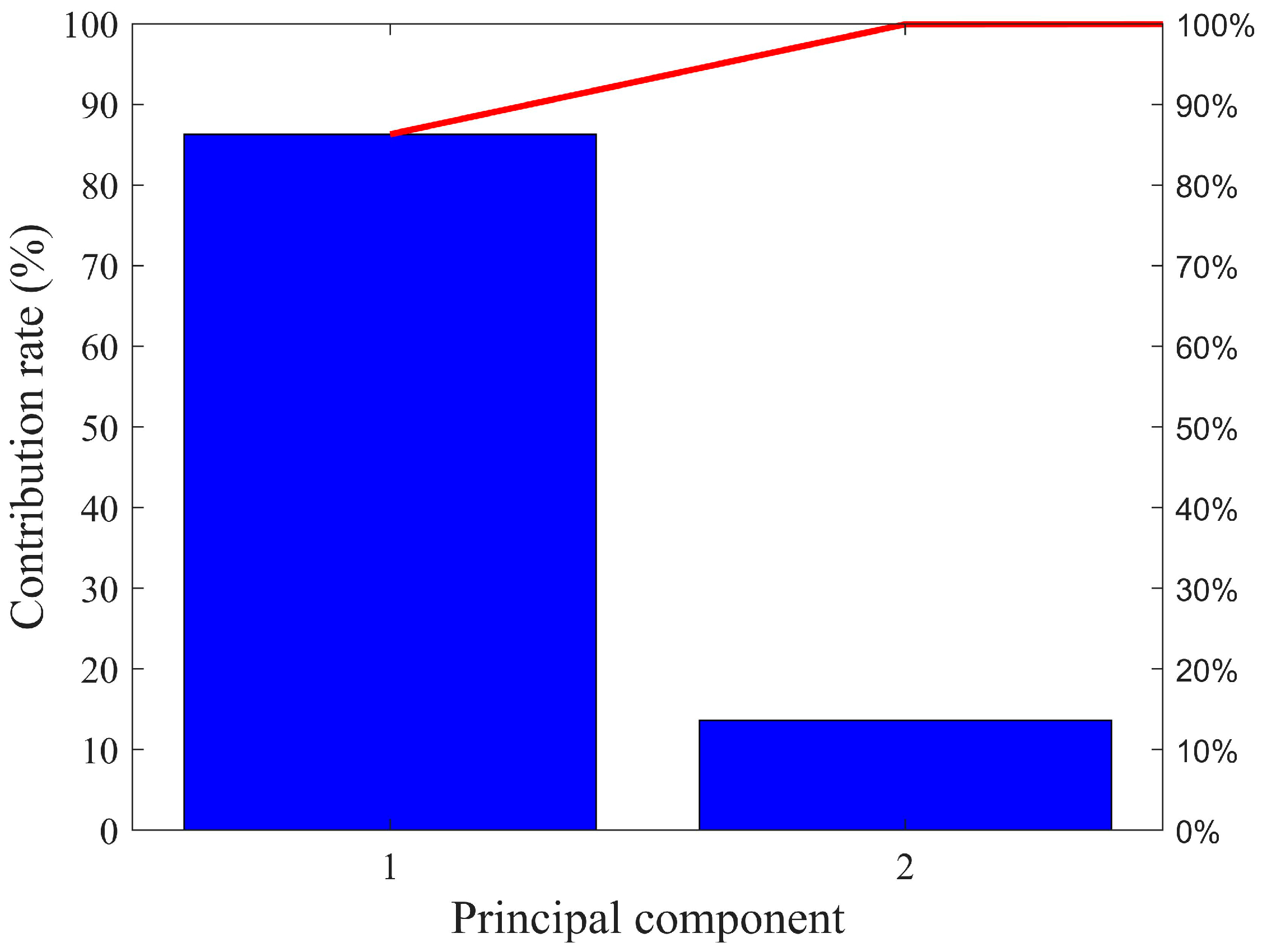
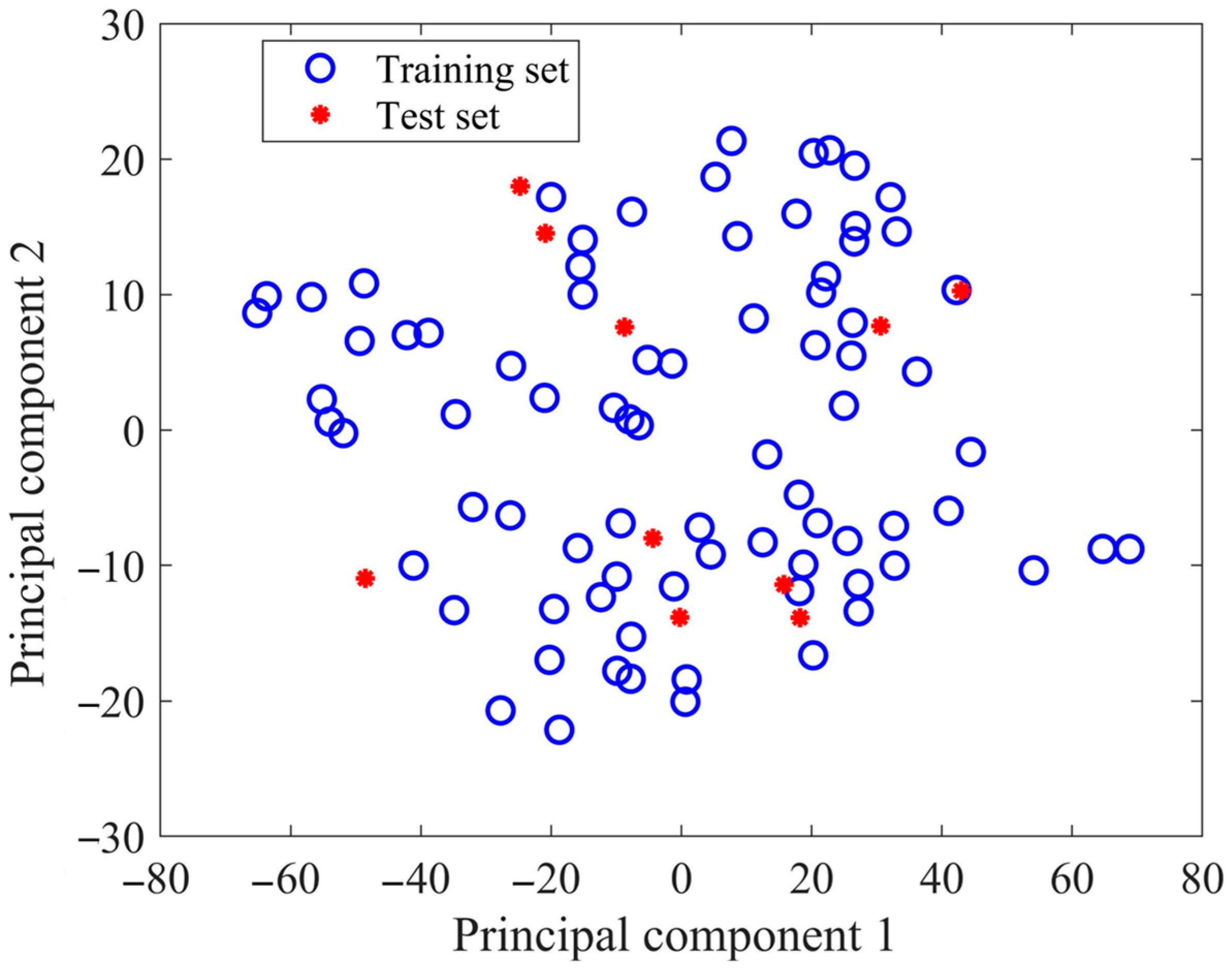
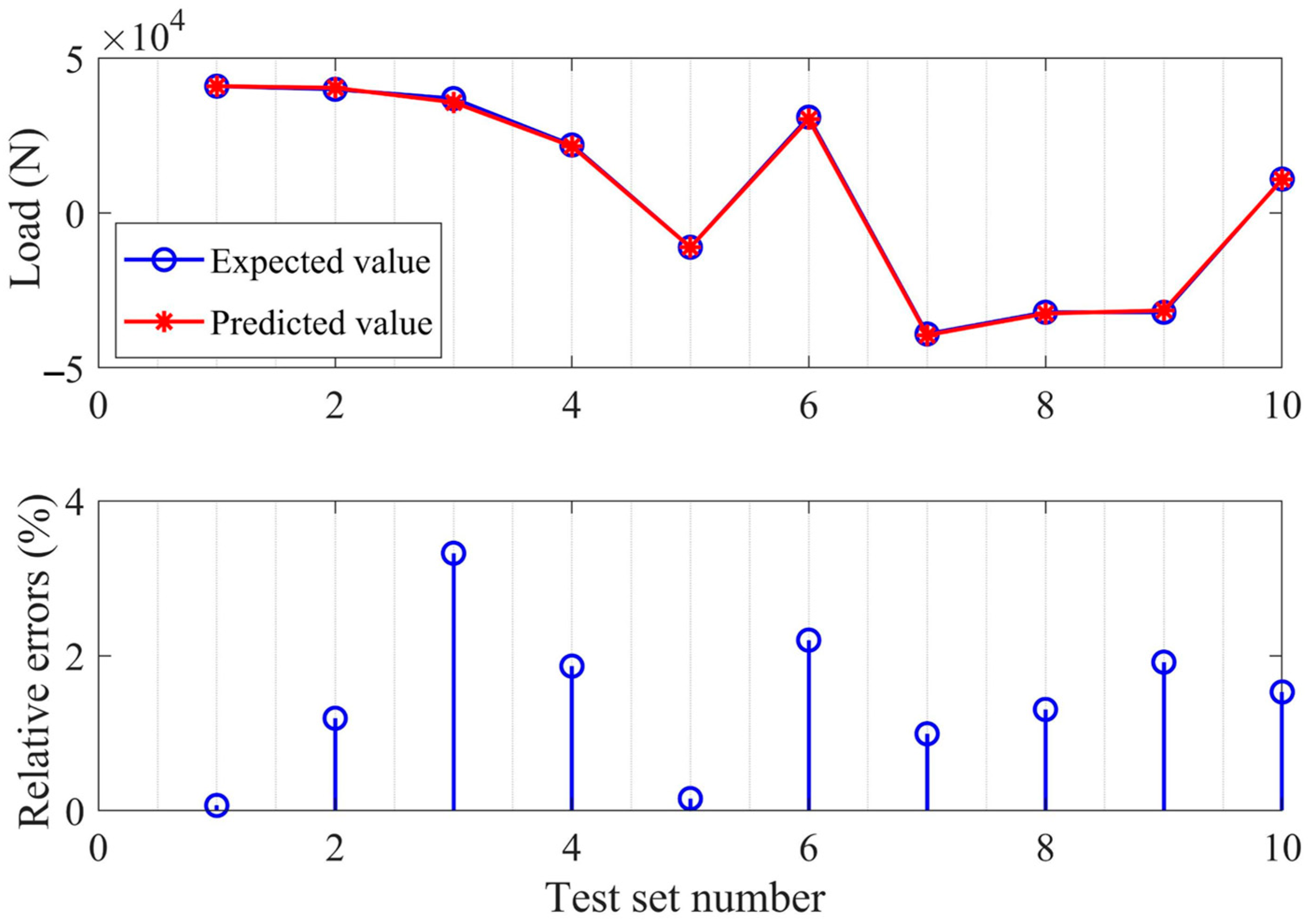
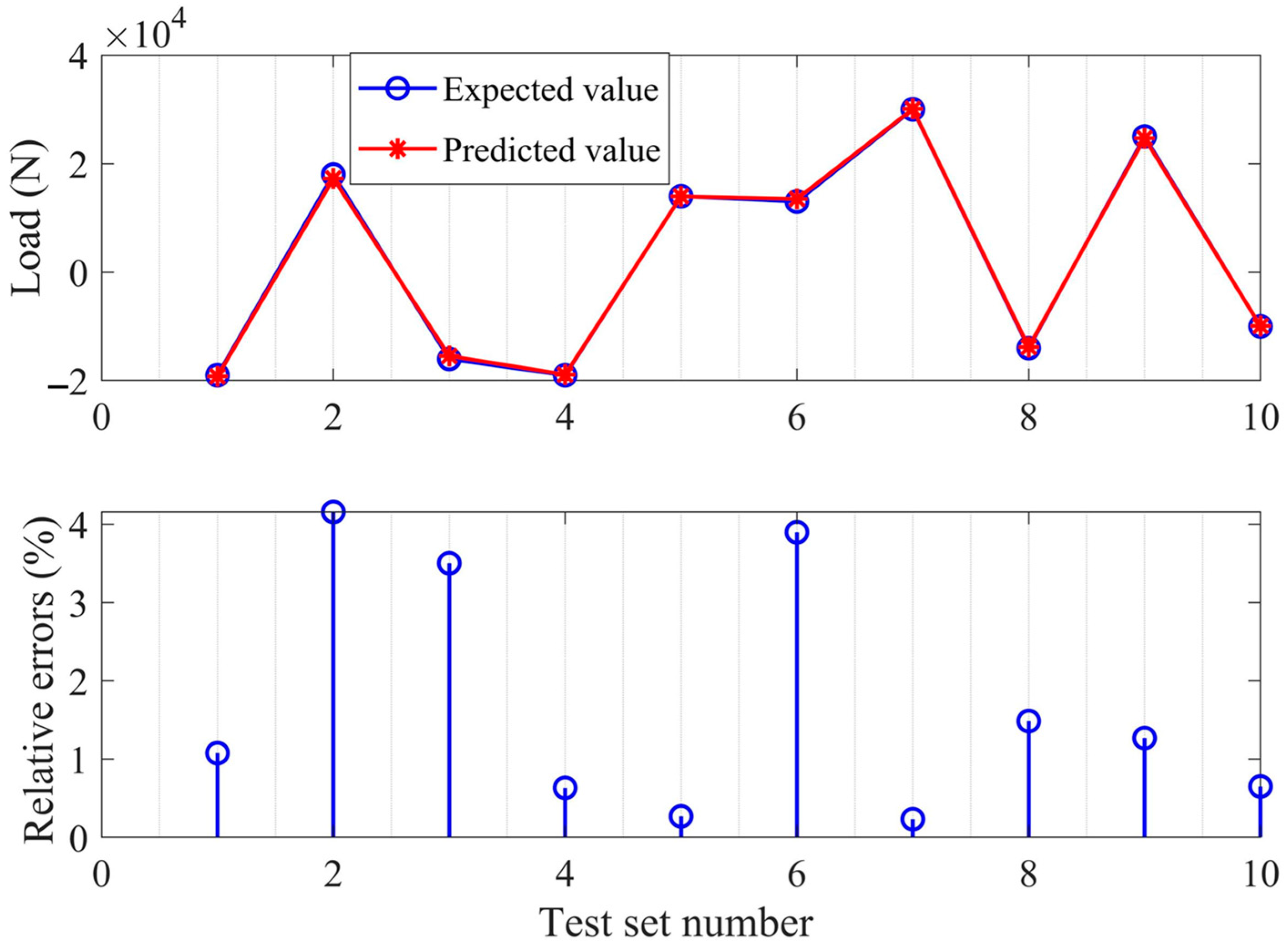
| Load Conditions | Strain Value of Monitoring Point 1 | Strain Value of Monitoring Point 2 | … | Strain Value of Monitoring Point m |
|---|---|---|---|---|
| 1 | 580 | 720 | … | 317 |
| 2 | 423 | 302 | … | 965 |
| … | … | … | … | … |
| n | 121 | 217 | … | 198 |
| Ordinal Number | First Monitoring Point | Remaining Monitoring Points (In Sequence) |
|---|---|---|
| 1 | 1 | 10, 12, 6, 13, 2, 7, 3, 8, 5, 11, 4, 9 |
| 2 | 2 | 7, 11, 4, 6, 12, 8, 5, 10, 1, 9, 3, 13 |
| 3 | 3 | 10, 6, 12, 11, 4, 8, 5, 2, 9, 1, 13, 7 |
| 4 | 4 | 8, 13, 2, 12, 6, 9, 1, 10, 3, 11, 5, 7 |
| 5 | 5 | 8, 1, 10, 4, 11, 3, 9, 6, 12, 2, 13, 7 |
| 6 | 6 | 12, 10, 3, 11, 4, 8, 5, 2, 9, 1, 13, 7 |
| 7 | 7 | 2, 11, 4, 6, 12, 8, 5, 10, 1, 9, 3, 13 |
| 8 | 8 | 4, 13, 2, 12, 6, 9, 1, 10, 3, 11, 5, 7 |
| 9 | 9 | 1, 8, 4, 11, 3, 13, 2, 7, 6, 5, 10, 12 |
| 10 | 10 | 3, 6, 12, 11, 4, 8, 5, 2, 9, 1, 13, 7 |
| 11 | 11 | 4, 2, 7, 6, 12, 8, 5, 10, 1, 9, 3, 13 |
| 12 | 12 | 6, 10, 3, 11, 4, 8, 5, 2, 9, 1, 13, 7 |
| 13 | 13 | 2, 4, 8, 12, 6, 9, 1, 10, 3, 11, 5, 7 |
Disclaimer/Publisher’s Note: The statements, opinions and data contained in all publications are solely those of the individual author(s) and contributor(s) and not of MDPI and/or the editor(s). MDPI and/or the editor(s) disclaim responsibility for any injury to people or property resulting from any ideas, methods, instructions or products referred to in the content. |
© 2024 by the authors. Licensee MDPI, Basel, Switzerland. This article is an open access article distributed under the terms and conditions of the Creative Commons Attribution (CC BY) license (https://creativecommons.org/licenses/by/4.0/).
Share and Cite
Peng, H.; Wang, B.; Ning, Y.; Cao, S.; Liu, M. Strain Gauge Location Optimization for Operational Load Monitoring of an Aircraft Wing Using an Improved Correlation Measure. Appl. Sci. 2024, 14, 9078. https://doi.org/10.3390/app14199078
Peng H, Wang B, Ning Y, Cao S, Liu M. Strain Gauge Location Optimization for Operational Load Monitoring of an Aircraft Wing Using an Improved Correlation Measure. Applied Sciences. 2024; 14(19):9078. https://doi.org/10.3390/app14199078
Chicago/Turabian StylePeng, Hang, Bintuan Wang, Yu Ning, Shancheng Cao, and Mabao Liu. 2024. "Strain Gauge Location Optimization for Operational Load Monitoring of an Aircraft Wing Using an Improved Correlation Measure" Applied Sciences 14, no. 19: 9078. https://doi.org/10.3390/app14199078
APA StylePeng, H., Wang, B., Ning, Y., Cao, S., & Liu, M. (2024). Strain Gauge Location Optimization for Operational Load Monitoring of an Aircraft Wing Using an Improved Correlation Measure. Applied Sciences, 14(19), 9078. https://doi.org/10.3390/app14199078








